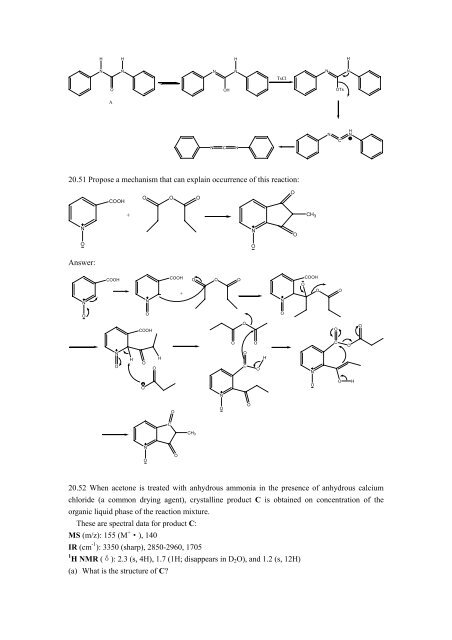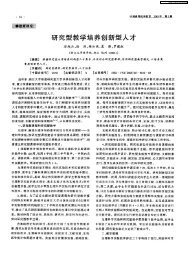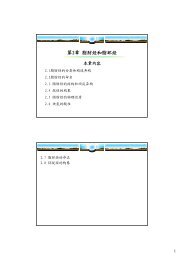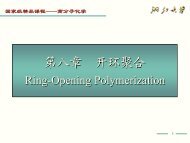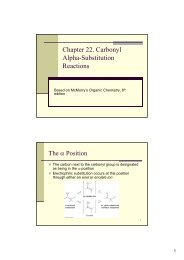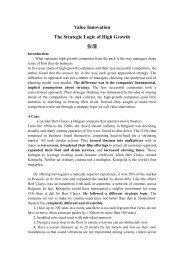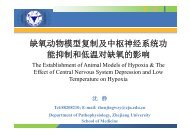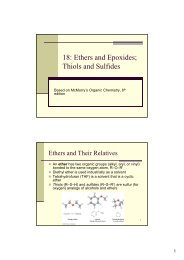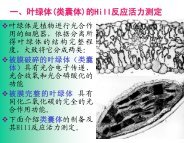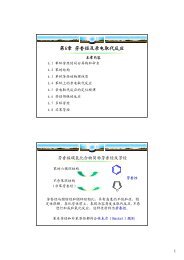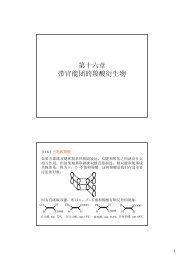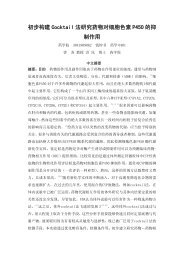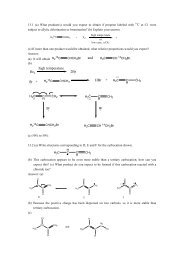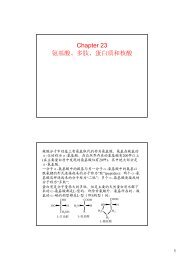20.2 Outline a procedure for separating a mixture
20.2 Outline a procedure for separating a mixture
20.2 Outline a procedure for separating a mixture
Create successful ePaper yourself
Turn your PDF publications into a flip-book with our unique Google optimized e-Paper software.
H<br />
N<br />
O<br />
A<br />
H<br />
N<br />
H<br />
N N<br />
OH<br />
N C N<br />
20.51 Propose a mechanism that can explain occurrence of this reaction:<br />
N<br />
O<br />
Answer:<br />
N<br />
O<br />
COOH<br />
COOH<br />
N<br />
O<br />
+<br />
H<br />
O O O<br />
N<br />
O<br />
COOH<br />
O<br />
O<br />
N<br />
O<br />
O<br />
H<br />
C<br />
COOH O O O<br />
O<br />
O<br />
+<br />
CH3<br />
N<br />
O<br />
O<br />
C<br />
O<br />
N<br />
O<br />
O O<br />
O<br />
O<br />
H<br />
TsCl<br />
N<br />
O<br />
O<br />
O<br />
CH 3<br />
H<br />
N N<br />
N<br />
OTs<br />
C<br />
COOH<br />
O<br />
O O<br />
20.52 When acetone is treated with anhydrous ammonia in the presence of anhydrous calcium<br />
chloride (a common drying agent), crystalline product C is obtained on concentration of the<br />
organic liquid phase of the reaction <strong>mixture</strong>.<br />
These are spectral data <strong>for</strong> product C:<br />
MS (m/z): 155 (M + ·), 140<br />
IR (cm -1 ): 3350 (sharp), 2850-2960, 1705<br />
1<br />
H NMR (δ): 2.3 (s, 4H), 1.7 (1H; disappears in D2O), and 1.2 (s, 12H)<br />
(a) What is the structure of C?<br />
N<br />
O<br />
O<br />
C<br />
O<br />
H<br />
N<br />
O<br />
H<br />
O


